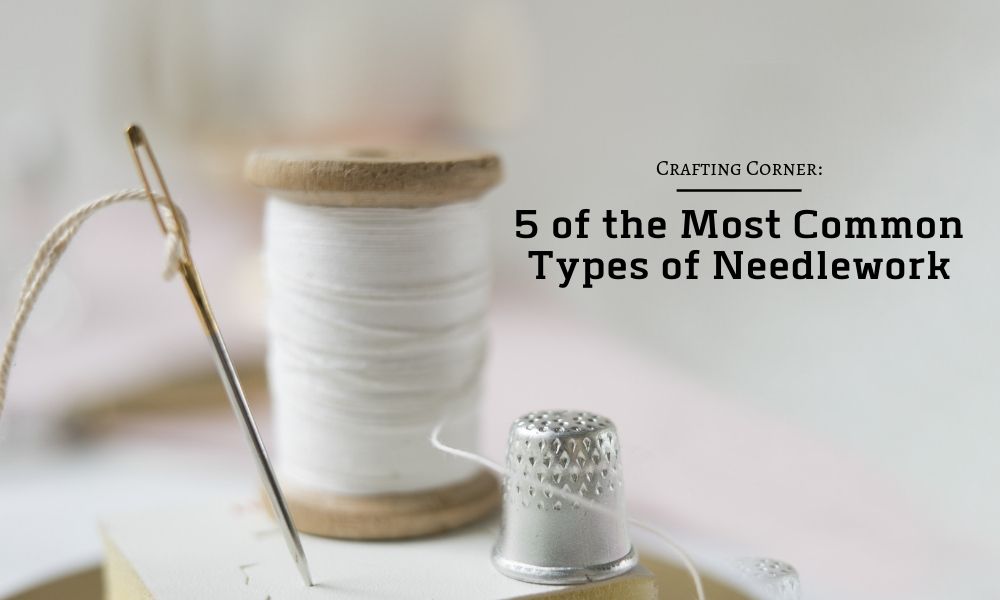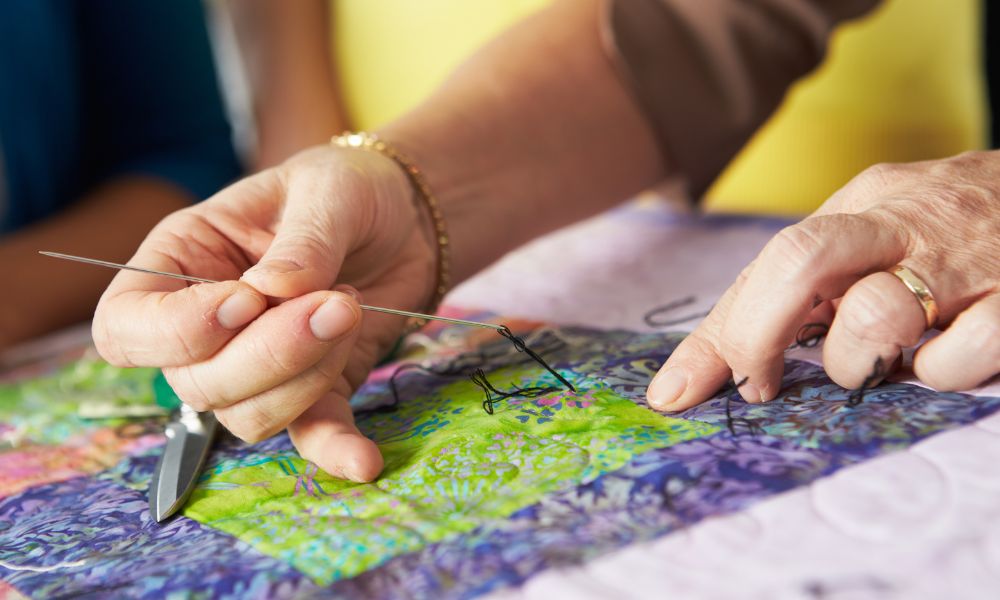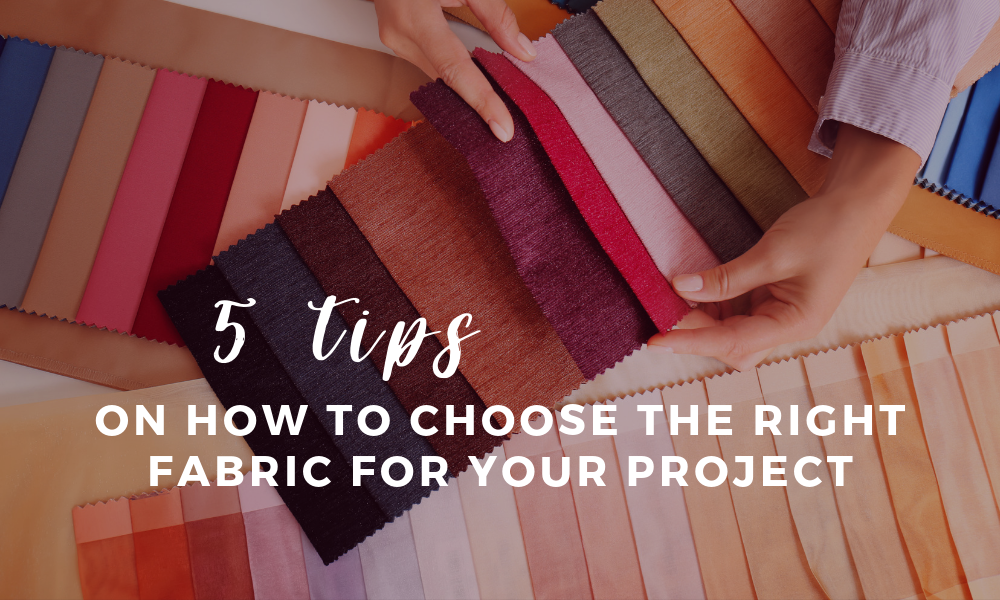Master Quilting: A Guide to Quilting Techniques and Styles

Quilting is an incredible way to release stress and express your creativity. For years, people have used quilting as a means of self-expression. In fact, the earliest known quilt is on a figure of the Pharaoh from the first dynasty (about 3400 B.C). As its been around for centuries, various forms of quilting have come about. The different techniques and styles are an incredible way to test your creativity. As you delve into the quilting world, you’ll need to know about the different aspects of quilting. Check out our guide to quilting techniques and styles—we lay it all out below.
Guide to Quilting Techniques and Styles
Quilting Techniques
Hand Quilting
The slower and more methodical of quilting techniques, hand quilting is the most classic method. It’s simple enough—you hand stitch the fabric pieces together to make the quilt top. The specific type of stitching depends on the general pattern of the quilt. You can choose large stitches or tight stitches, but either way, what matters is that you have a calm, steady hand and a lot of patience. These quilts will take much longer to accomplish than others.
Machine Quilting
Although hand quilting is the most classic method, machine quilting is the most popular. It makes the quilting process run much faster, smoother, and more efficiently. Use different stitches and techniques that you see fit to add unique touches to your quilt. Make sure you get a quality machine, otherwise you’ll run the risk of destroying your fabrics.
Free-Motion Quilting
Free-motion quilting means that you move the fabric freely with the machine needle. In doing so, you have the ability to stitch in wavy or circular motions, with or without a plan. Unique patterns and designs are often made with this quilting style. It’s a lovely skill to perfect, but it can take a bit more time.
Longarm Quilting
This quilting style requires a special machine. It’s a large sewing machine that has an extended quilting head, and the frame can reach anywhere from 10 to 14 feet long. It has rollers and a frame that are guided by hand or computer. Basically, this machine can sew all the various layers of a quilt and do so quickly—this style is definitely for the experienced quilter.
Different Styles of Quilts
Amish Quilts
Amish quilts are the simplest quilt type. They were originally created to use up fabric scraps and have now transformed into a simple yet striking art form. They typically have very strong seams and long-lasting fabrics so they can be used as bedding. Amish quilts are entirely hand quilted and are often detailed with geometric designs and solid fabrics.
Applique Quilts
Applique quilt projects are sewn either by hand or by machine and refers to sewing patches to a background. These quilts are heavily decorated and show off the artistry of the creator. For this type of quilt, the different pieces of fabric are cut into shapes and sewn together, and then sewn onto a larger piece of fabric. These take longer to create since it’s a longer process of meshing together many fabrics into unique designs.
Patchwork Quilts
Patchwork quilts are the most basic quilt types. Almost all quilts fall under this category, as it means that it’s designed by sewing pieces of fabric together. These are typically quite colorful and varied in design and pattern. Patchwork quilts are a wonderful way to get started in quilting because of their overall simplicity. They can use any type of construction technique, any size of fabric, and are put together in any personalized way. Most people stick with this quilt type until they are comfortable with the process.
Hawaiian Quilts
This type of quilt has a distinctive style that comes directly from the Hawaiian Islands. They are made up of large, radially symmetrical appliqued patterns. These quilt designs are often stylized floral designs with a white background. They are classic, colorful, and difficult to replicate, which is why the antique Hawaiian quilts are highly sought after. In the past, each Hawaiian quilt was made either to celebrate an important life event or in memory of loved ones. The style focuses on incorporating aspects of nature to recall what is sentimental in the culture.
Paper Pieced Quilts
Also called Foundation Paper Piecing (FPP), this quilt style focuses on creating sharp edges to produce clean yet dramatic designs. It’s basically like quilting by numbers, as you stitch fabric onto a patterned paper. The different patterns you choose will have specific lines and numbers for you to follow as you construct each block of the quilt. A lot of people enjoy this quilt style as it allows you to easily complete intricate designs—just follow the numbers. We offer multiple templates for beginners and experts that leave you with a beautiful, structured quilt.
English Paper Piecing Quilts
Dating all the way back to the 18th century, English Paper Piecing (EPP) is a classic quilting style, and a beautiful one at that. Similar to Foundation Paper Piecing, this style is used when piecing together shapes that have many sides—like flowers. It involves cutting individual templates to an exact shape or size, but instead of stitching by number, the fabric is wrapped around the pieces, and then basted and pressed. The paper works to hold the fabric into the specific shape, and then a whipstitch pieces the shapes together. This quilt requires more hand-sewing, but once finished and the paper is removed, you’re left with a gorgeous quilt that will stun all who see it.
If you’ve decided it’s time to try quilting, Lindley General Store has everything you need to make your quilts in Canada. Our extensive online quilt shop has all the materials and supplies that you need to start your quilting career. Our fabrics are endless, our books will help you learn more about finessing your techniques, and our tools will keep you sharp and capable. No matter what quilt you create, Lindley General Store has what you need—we hope you enjoy the soothing nature of the craft just as much as we do!








Comments